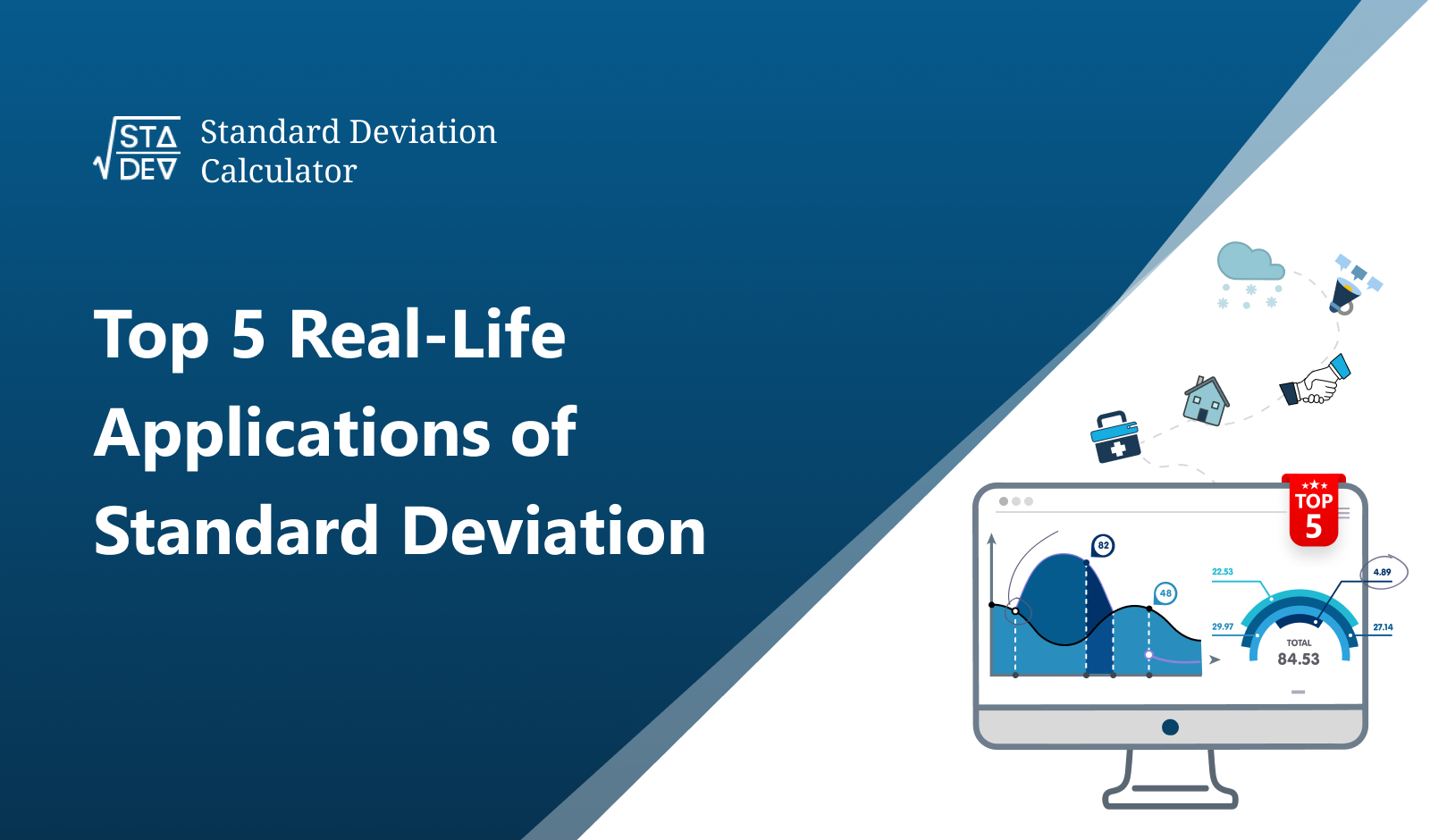Top 5 Real-Life Applications of Standard Deviation

In the world of statistics, standard deviation is one of the most commonly used measures of variability or dispersion in a dataset. It provides insights into the spread of data points around the mean (average), offering a clear understanding of the overall data distribution.
The practical applications of standard deviation span numerous sectors, from finance and quality control to healthcare and sports analytics. In this blog, we'll delve into the top 5 real-life applications of standard deviation.
Also, you'll learn how to quickly and accurately calculate the standard deviation with an online tool, the Standard Deviation Calculator.
Finance:
When it comes to finance, standard deviation is widely used to measure the risk associated with different investments. By calculating the standard deviation of historical returns, investors can understand the volatility or variability of an investment's returns.
A higher standard deviation indicates a higher level of risk and potential return. This assists investors in building a diversified portfolio that aligns with their risk tolerance.
Quality Control:
Standard deviation plays a crucial role in manufacturing and quality control. By calculating the standard deviation of product dimensions or production processes, companies can ensure consistency and quality in their products.
A smaller standard deviation indicates less variability, meaning the product's dimensions are closer to the target value, leading to higher product quality.
Healthcare:
In healthcare, the standard deviation is utilized in various ways, such as tracking patient health progress, studying the effectiveness of a new drug, or understanding patterns in patient behavior.
A larger standard deviation in patient recovery times, for instance, could indicate a more variable recovery process, leading doctors to examine potential causes for this variability.
Sports Analytics:
In the sports industry, standard deviation helps in the performance evaluation of teams or individual athletes over a certain period. For instance, a lower standard deviation in a basketball player's scoring average would indicate consistent performance.
On the other hand, a higher standard deviation may indicate inconsistency.
Education:
Finally, in education, standard deviation is used to interpret student grades and test scores. It can help understand the spread of scores in a class or across different classes, offering insights into student performance.
A smaller standard deviation would indicate that students' scores are clustered closely around the mean, while a larger one might suggest a wide range of student performance levels.
All these applications necessitate a robust understanding of standard deviation and its calculation.
Wrap-up:
Thankfully, our Standard Deviation Calculator makes it incredibly easy to calculate standard deviation, saving time and ensuring accuracy.
The concept of standard deviation might seem daunting at first, but when understood and applied correctly, it serves as a powerful tool, enabling us to understand and interpret variability in data across various fields.
Its applications, as we've seen, span a multitude of sectors, making it an indispensable tool in our data-driven world. The more we understand it, the more informed decisions we can make.


